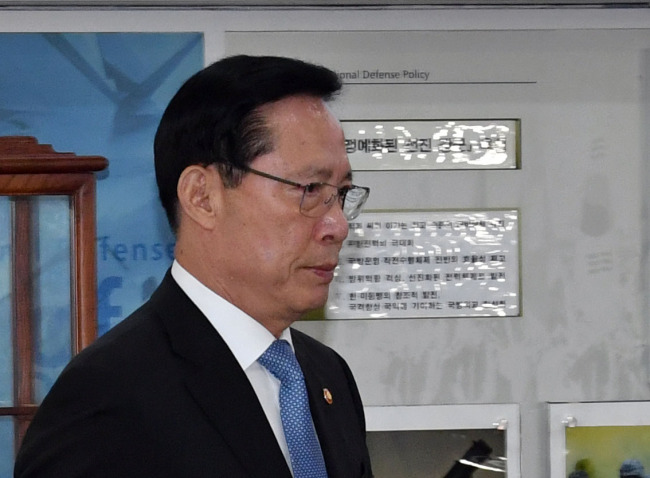The defense reform plan announced last week aims to overhaul the military’s command systems and troop organization amid the country’s growing need to adapt to the changing security landscape and the demographic shift.
However, the plan lacks specific measures for changing the operational scheme in the event of a war with North Korea, which had been expected to be incorporated into the reform blueprint since the military floated the idea last year.
The Ministry of National Defense on Friday unveiled a long-awaited defense reform plan after briefing President Moon Jae-in. Defense Minister Song Young-moo said the plan focused on enhancing civilian control over the military and striking a balance among different service branches.
“The defense reform plan’s ultimate goal is to establish a democratic, advanced military structure,” Song said during a press briefing. “I’m going to push for the defense reform plan with commitment to creating a new military under a new era.”
Among the key structural changes is replacing the current US-led Combined Forces Command with one led by South Korea. Under the reform blueprint, South Korea’s chairman of Joint Chiefs of Staff is expected to assume the role of commander, while the US general serves as the deputy.
The Defense Ministry will also create a new Ground Operational Command next year by integrating the1st and 3rd Field Army Commands. The integrated command is to be activated on Jan 1, 2019.
Regarding the Air Force and Navy, a new reconnaissance wing will enhance the Air Forces’ capabilities for long-distance and space operations, while the Navy will expand its maritime task flotilla and aviation wing to secure capabilities for surface, underwater and aerial operations.
“In order to address various threats from diverse dimensions, we will realign our forces’ structure to allow for prompt response against enemies. … Our focus is on developing a future-oriented military structure in line with advanced scientific technology,” the Defense Ministry said in a statement.
 |
Defense Minister Song Young-moo. Yonhap |





![[Herald Interview] 'Trump will use tariffs as first line of defense for American manufacturing'](http://res.heraldm.com/phpwas/restmb_idxmake.php?idx=644&simg=/content/image/2024/11/26/20241126050017_0.jpg)
![[Exclusive] Hyundai Mobis eyes closer ties with BYD](http://res.heraldm.com/phpwas/restmb_idxmake.php?idx=644&simg=/content/image/2024/11/25/20241125050044_0.jpg)
